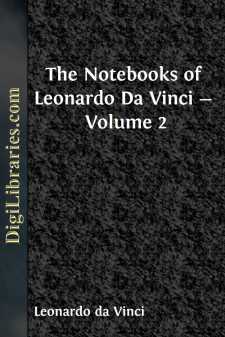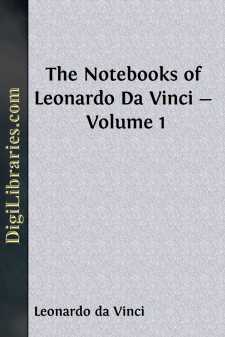Categories
- Antiques & Collectibles 13
- Architecture 36
- Art 48
- Bibles 22
- Biography & Autobiography 813
- Body, Mind & Spirit 142
- Business & Economics 28
- Children's Books 17
- Children's Fiction 14
- Computers 4
- Cooking 94
- Crafts & Hobbies 4
- Drama 346
- Education 46
- Family & Relationships 57
- Fiction 11829
- Games 19
- Gardening 17
- Health & Fitness 34
- History 1377
- House & Home 1
- Humor 147
- Juvenile Fiction 1873
- Juvenile Nonfiction 202
- Language Arts & Disciplines 88
- Law 16
- Literary Collections 686
- Literary Criticism 179
- Mathematics 13
- Medical 41
- Music 40
- Nature 179
- Non-Classifiable 1768
- Performing Arts 7
- Periodicals 1453
- Philosophy 64
- Photography 2
- Poetry 896
- Political Science 203
- Psychology 42
- Reference 154
- Religion 513
- Science 126
- Self-Help 84
- Social Science 81
- Sports & Recreation 34
- Study Aids 3
- Technology & Engineering 59
- Transportation 23
- Travel 463
- True Crime 29
Leonardo da Vinci
Leonardo da Vinci (1452–1519) was a Renaissance polymath, excelling in art, science, engineering, anatomy, and writing. Though most famous for masterpieces like "Mona Lisa" and "The Last Supper," he also authored numerous notebooks filled with ideas, sketches, and reflections on various subjects. His writings, often written in mirror script, covered topics from anatomy to engineering, and were later compiled into works like "Codex Atlanticus" and "Codex Leicester." Leonardo's interdisciplinary genius greatly influenced both his contemporaries and future generations, blending creativity and scientific inquiry in groundbreaking ways.
Author's Books:
Sort by:
The notes on Sculpture. Compared with the mass of manuscript treating of Painting, a very small number of passages bearing on the practice and methods of Sculpture are to be found scattered through the note books; these are here given at the beginning of this section (Nos. 706-709). There is less cause for surprise at finding that the equestrian statue of Francesco Sforza is only incidentally spoken...
more...
A singular fatality has ruled the destiny of nearly all the most famous of Leonardo da Vinci's works. Two of the three most important were never completed, obstacles having arisen during his life-time, which obliged him to leave them unfinished; namely the Sforza Monument and the Wall-painting of the Battle of Anghiari, while the third—the picture of the Last Supper at Milan—has suffered...
more...



